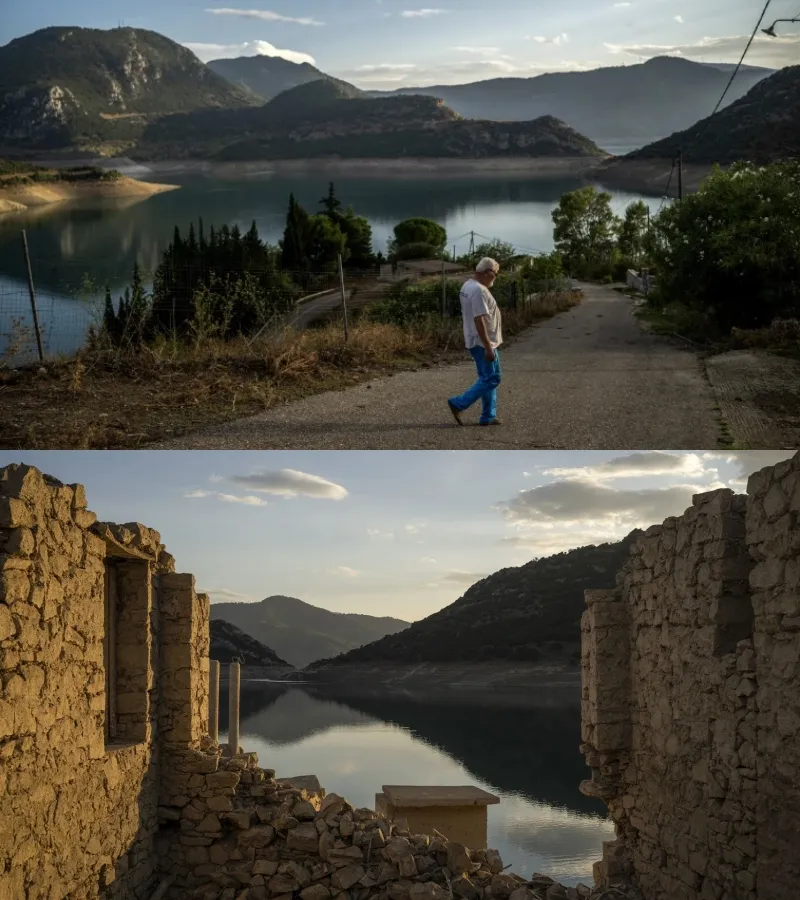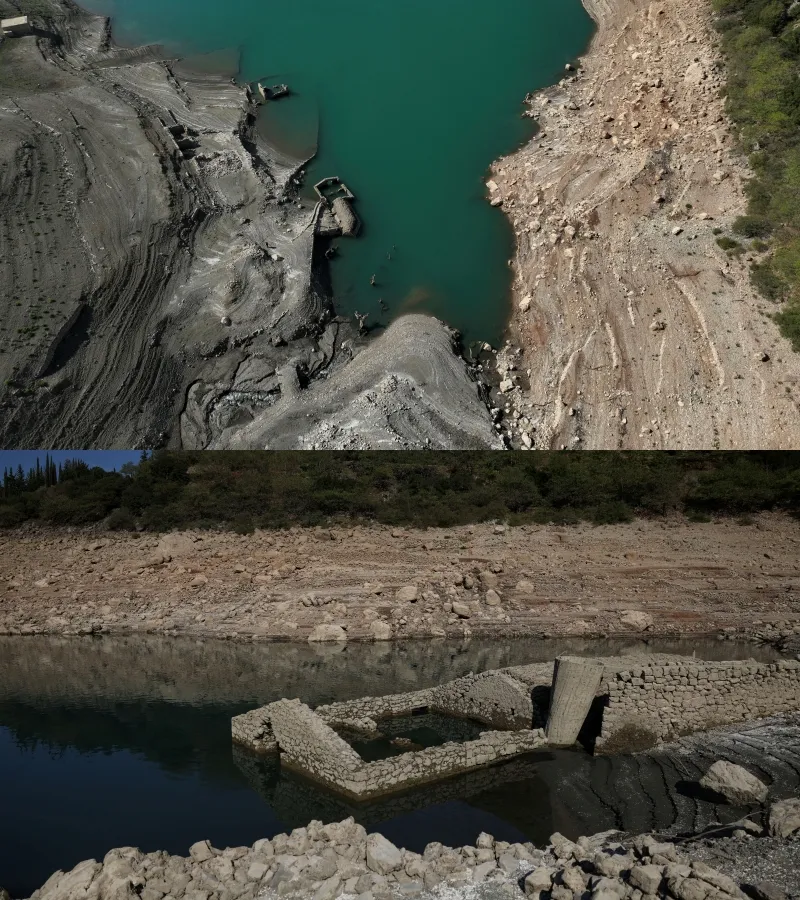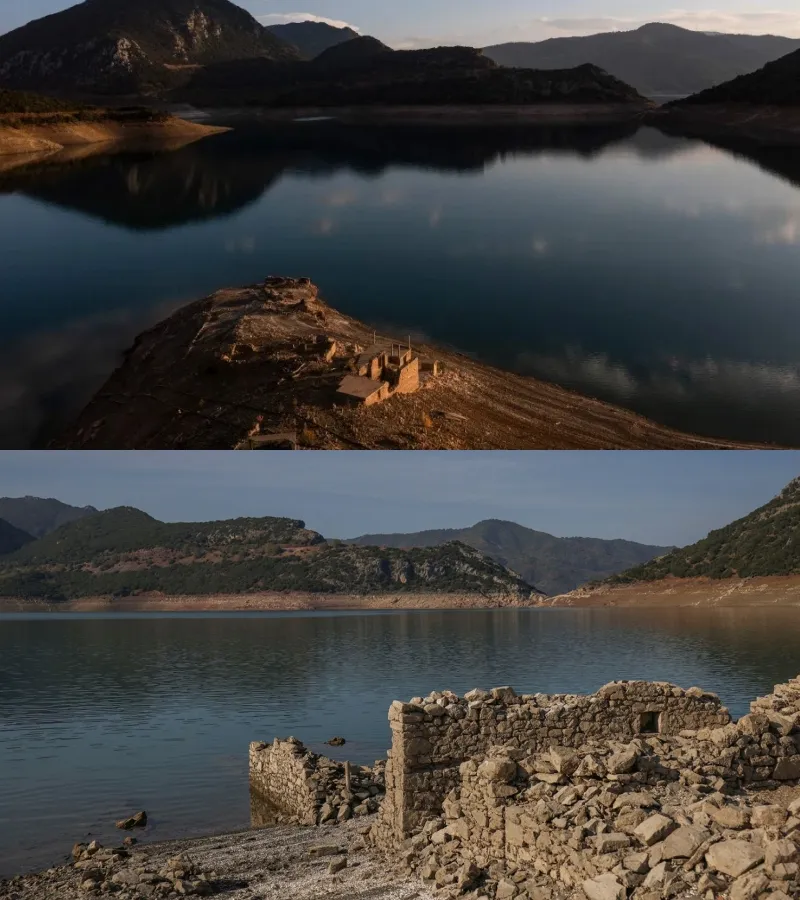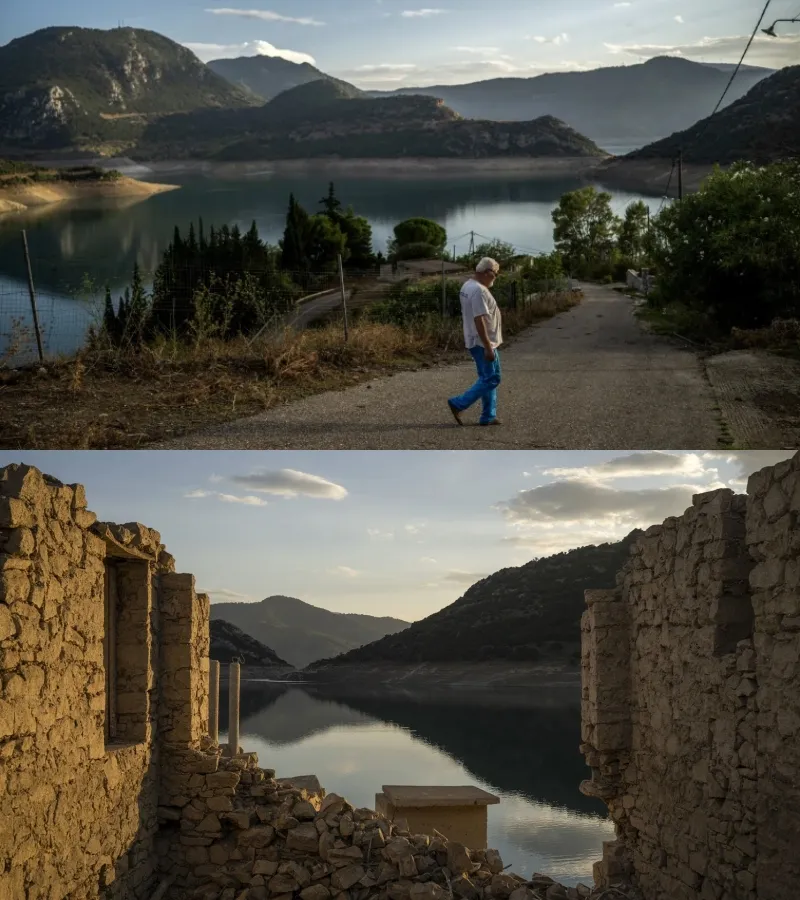
The muddy remains of homes have started to emerge from the shrinking Lake Mornos in central Greece, nearly 45 years after the village of Kallio was submerged underwater. A severe drought, caused by a lack of snow in winter, record-breaking summer heatwaves, and minimal rainfall, has caused Lake Mornos, a critical water source for nearly half of Greece’s population, to dwindle to its lowest levels in decades.

A Village Reemerges from the Depths
“Day by day, the water goes down,” said Dimitris Giannopoulos, mayor of Dorida municipality, noting that the current water levels have not been seen for 33 years. Around the ruins of Kallio, long stretches of cracked soil surround the village, which was flooded in 1980 to create a reservoir to meet the growing water demands of Athens, located about 200 kilometers (124 miles) away. Remnants of bricks are now scattered among mounds of seashells.

Greece’s Vulnerability to Climate Change
Greece’s Mediterranean climate makes it particularly susceptible to global warming effects, including prolonged droughts and severe wildfires, such as those that reached Athens’ outskirts last month. Scientists attribute the drying of Lake Mornos to extreme weather patterns linked to climate change.
Efthymis Lekkas, a professor of disaster management at the University of Athens, described the situation as “an alarm bell.” He warned, “We don’t know what will happen in the coming period. If we have a rainless winter, things will get difficult.”
The region’s situation is exacerbated by the absence of snow on Mount Giona, which used to be snow-capped every winter. “This has never happened before,” Giannopoulos observed, pointing to the yellowing trees around the lake, now showing signs of severe dehydration.
Impact on Local Communities and Wildlife
The water crisis is affecting local communities and increasing the risk of wildfires. Wells in nearby areas are drying up, and villages that do not rely on lake water experienced water shortages this summer. A local firefighter chief warned of an increased risk of wildfires as the forests become drier.
Lake Mornos’ surface area has dramatically shrunk from about 16.8 square kilometers (6.5 square miles) in August 2022 to just 12.0 square kilometers (4.6 square miles) this year, according to satellite data from Greece’s National Observatory. Water reserves across the four reservoirs supplying Attica, which includes Athens, dropped to 700 million cubic meters (25 billion cubic feet) in August, down from 1.2 billion cubic meters (42 billion cubic feet) in 2022, the Environment Ministry reported. In response, the state-run Athens water company, EYDAP, has started supplementing the water supply network with additional sources.

Mixed Feelings Among Former Residents
Former residents of Kallio, like 90-year-old Konstantinos Gerodimos, express mixed emotions about seeing their old village again. “I used to see it full and say it was a beach. Now all you see is dryness,” he lamented. His 77-year-old wife Maria added, “If it continues like this, the entire village will appear, all the way to the bottom, where the church and our home was.”
As climate change continues to cause unprecedented weather patterns, Greece faces growing challenges to its water supply, impacting communities, agriculture, and wildlife. The reappearance of Kallio from the depths of Lake Mornos serves as a stark reminder of the urgent need for action against climate change and the protection of vital natural resources.






